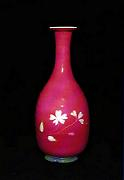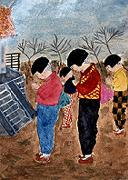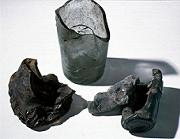Shinagawa and industrial urbanization
At the beginning of the Meiji Era, the Meiji government geared up industries one after another in order to strengthen their authority. In 1872 (5th year of the Meiji Era), Shinagawa Station was built, with inaugural rail service from Shinbashi Station to Yokohama Station. In terms of modern industry, Shinagawa Glass Factory was founded in 1873 (6th year of the Meiji Era). Many products and craftsmen date from this time.
After the late Meiji Era, many factories were built one after another along the Meguro River. Population grew rapidly and many industries were founded in Shinagawa. In Oi on the other hand, Oi Station was opened and the railway maintenance factory moved to Oi from Shinbashi during the Taisho Era. As a result, population increased rapidly, and urbanization continued, and formed a prototype of the modern town. Many people who lost their homes as a consequence of the Great Kanto Earthquake in 1923 (12th year of the Taisho Era) moved to the Shinagawa area, which also increased urbanization.



